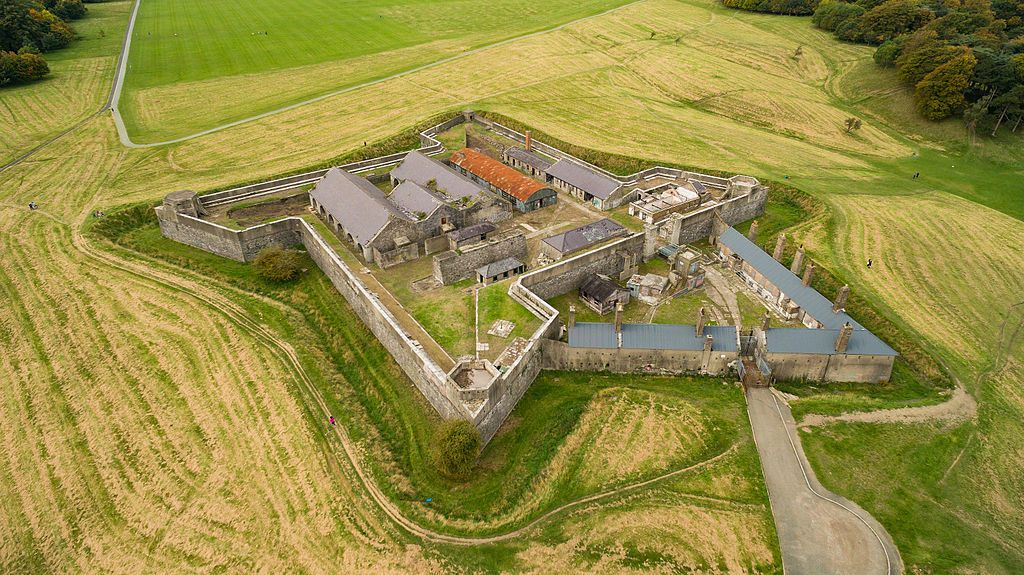In Dublin’s expansive Phoenix Park, the 18th-century Magazine Fort remains a captivating glimpse into history. Originally built between 1734 and 1736 to store gunpowder and ammunition for the British Government Forces. The fort was later expanded in 1801. It is now a prominent landmark within one of Dublin‘s most scenic parks.

History
When the Duke of Dorset commissioned the construction of an ammunition store for Dublin, he chose the site of the former Phoenix Lodge. This decision, made during a period marked by widespread poverty in Dublin, drew sharp criticism from satirist Jonathan Swift. He famously penned a verse that sarcastically highlighted the irony: “Now here’s a proof of Irish sense, Here Irish wit is seen, When nothing’s left that’s worth defence, We build a Magazine.” Swift’s words resonated widely, illustrating the stark contrast between the city’s urgent needs and the choices made by its rulers.

The Magazine Fort, characterized by its square shape and four demi-bastions, holds significant historical and architectural value. Enhancing its 18th-century origins are concrete pillbox machine-gun posts positioned at its corners, representing 20th-century military fortification techniques. Within the fort, original features like the magazine chambers and blast wall remain intact. Alongside additional structures added in subsequent years. Encircled by a dry moat, the fort’s sturdy exterior is complemented by a small barracks and accommodation block. Which were constructed during the 1801 expansion to house troops.

The Magazine Fort has witnessed its fair share of dramatic events, including two significant raids during its operational history. The first occurred on Easter Monday in 1916, amidst the Easter Rising. Youth members of Fianna Éireann launched a daring assault on the fort, seeking weapons and attempting to detonate explosives. Fortunately, their efforts were largely unsuccessful as the fuses burned out before reaching the ammunition stores, causing minimal damage to the fort itself.

The Christmas Raid
In 1939, it was the scene of another significant event known as the “Christmas Raid“. During this operation, the Irish Republican Army successfully seized weapons and more than one million rounds of ammunition, although much of it was recovered in the weeks that followed.
After the Anglo-Irish Treaty in 1922, control of the fort was transferred from the British to the Irish Defence Forces. It remained under Irish Army management until 1988, when it was subsequently handed over to the Office of Public Works. Since then, ongoing efforts have been made to preserve this historic fort, ensuring that its legacy continues to be cherished by future generations.








